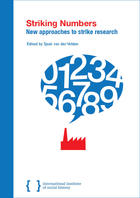
Based on a workshop of the Labour Conflicts Collaboratory at the IISH this Research Paper offers new perspectives on quantitative research on strikes. Case studies on Austria, Germany, and Switzerland; Ghana; Russia; Sweden; the Netherlands; and Canada are combined with a methodological essay on the building of a data repository and the use of micro data in strike research to offer a global perspective on the possibilities of strike research through a research collaboratory.
Table of Contents
- Editor’s foreword;
- Introduction;
- The influence of business cycles on strike activity in Austria, Germany and Switzerland, Julia Casutt;
- Strike volume in Ghana: Trajectory of labour strikes in Ghana, Edward Fokuoh Ampratwum;
- The structure and dynamics of the workers’ protest movement at the beginning of the 20th century in Russia: Database analysis, Leonid Borodkin, Irina M. Pushkareva and Irina V. Shilnikova;
- To participate or not to participate? Demographic aspects of the first mass strike in Sundsvall, Sweden in 1879, Maria Bergman;
- Why do workers strike? Looking for an answer using micro data on Leiden strikers in 1914, Sjaak van der Velden;
- Beyond the average and the aggregate: Researching strikes in Canada, Linda Briskin;
- Building a repository for strike data: The search for micro data, Sjaak van der Velden.
